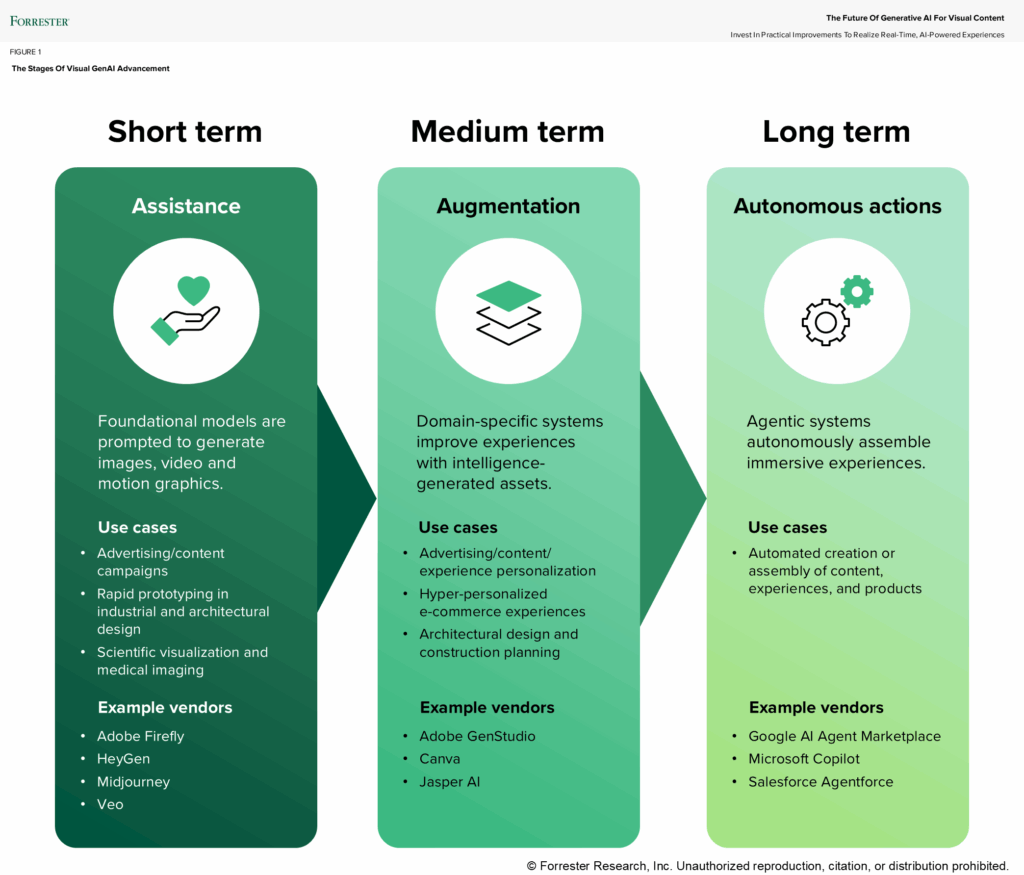The Future Of GenAI For Visual Content
Over the past few months, my colleagues Jay Pattisall, Indranil Bandyopadhyay, and I interviewed dozens of executives to understand the future of generative AI for visual content, one of Forrester’s top 10 emerging technologies in 2025. Forrester defines genAI for visual content as:
Advanced AI systems that generate, modify, or enhance images, videos, and 3D motion graphics by learning patterns from existing data, producing contextually relevant and immersive content and experiences.
The pace of technology innovation is accelerating quickly for these technologies. The global CMO of a large consumer goods company told us that he was fascinated by the progress made on video generation in just six months. Momentum keeps growing with tools and platforms such as Adobe Firefly, Canva, HeyGen, Jasper, Midjourney, Runway, Sora, Typeface, and Veo, to name a few. Within 24 months, AI-generated video will increase the frequency and efficacy of storytelling content, 3D and virtual twin technologies will further personalize services and products, and virtual simulations will anticipate consumers’ needs and interests.
GenAI For Visual Content’s Future Will Unfold Over Three Time Horizons
Over the next two to five years, visual AI technologies will enable businesses to engage responsively with customers and consumers. Organizations can expect to achieve short-term, medium-term, and long-term ROI based on their current maturity, their level of investment, and the state of the external factors governing emerging technology.
- Short term (one to two years): Companies will pragmatically integrate genAI into existing visual content workflows.
- Medium term (three to seven years): Advances in AI models and the standardization of legal frameworks will make the scaled adoption of genAI a prerequisite for competitive content creation.
- Long term (more than seven years): Sufficiently robust and context-aware generative models will become a reality, capable of acting as proactive creative partners rather than passive tools.

Act Now To Make An Agentic Visual Content Future Your Reality
To realize this augmented and autonomous vision of the future, leaders must make pragmatic advances today and move beyond pilot projects to proficiency with visual AI. The promise of real-time, immersive experiences requires enterprise technology and brand executives to overcome the technical and logistical barriers of AI performance and usage. Begin your journey to the future of genAI for visual content by:
- Expanding commercial indemnity to hedge legal and reputational risk. Beyond data privacy and security, IP considerations and indemnification when using these models are major concerns for companies.
- Standardizing your monetization strategy for visual generation technologies. Establish a standard payment framework for AI providers, anchored by an internal “normalized unit cost” — such as the price per minute of 1080p video — and build this value-based model into all contracts and master service agreements.
Clients who want to know more can access the full report and set up some time to discuss the implications for their own company.
